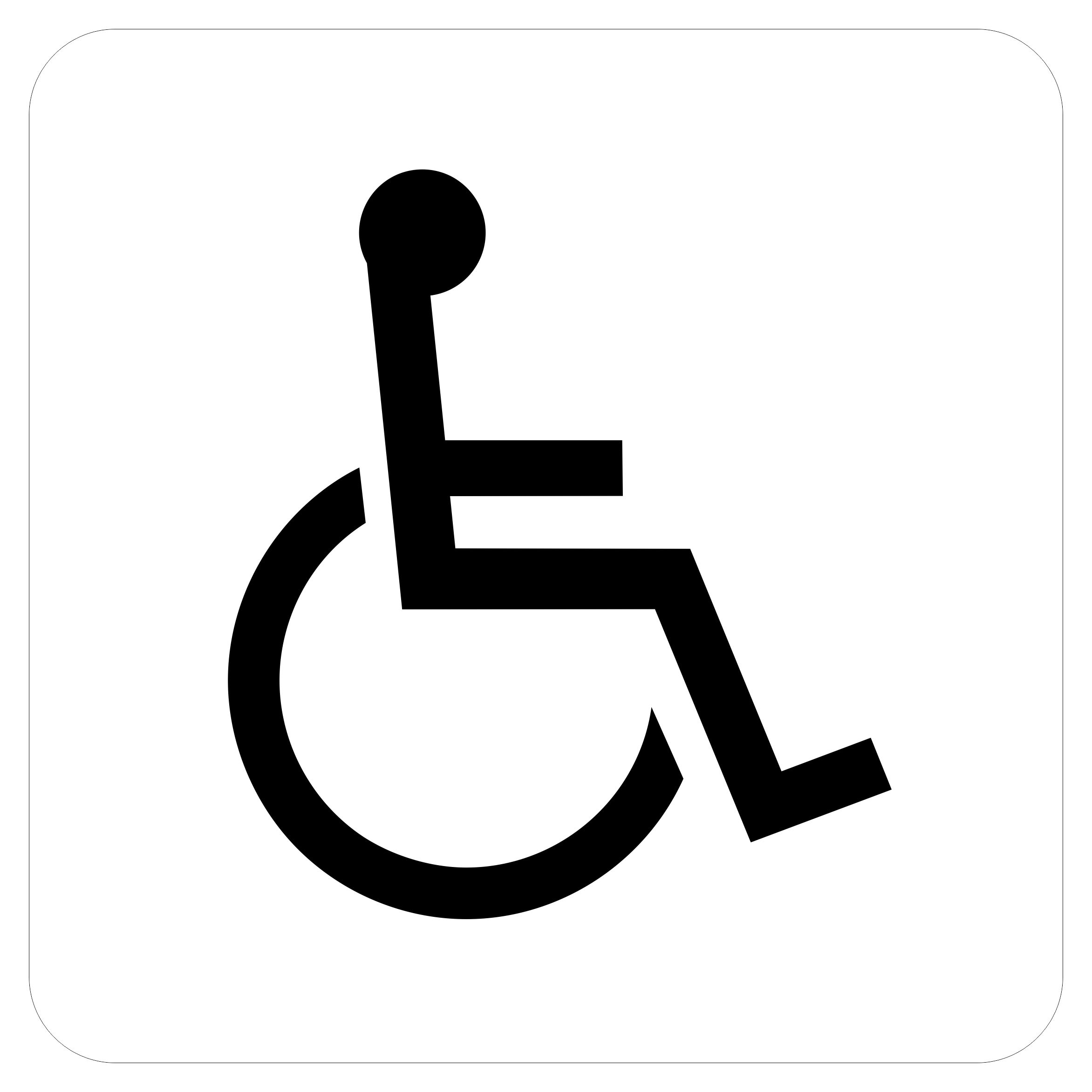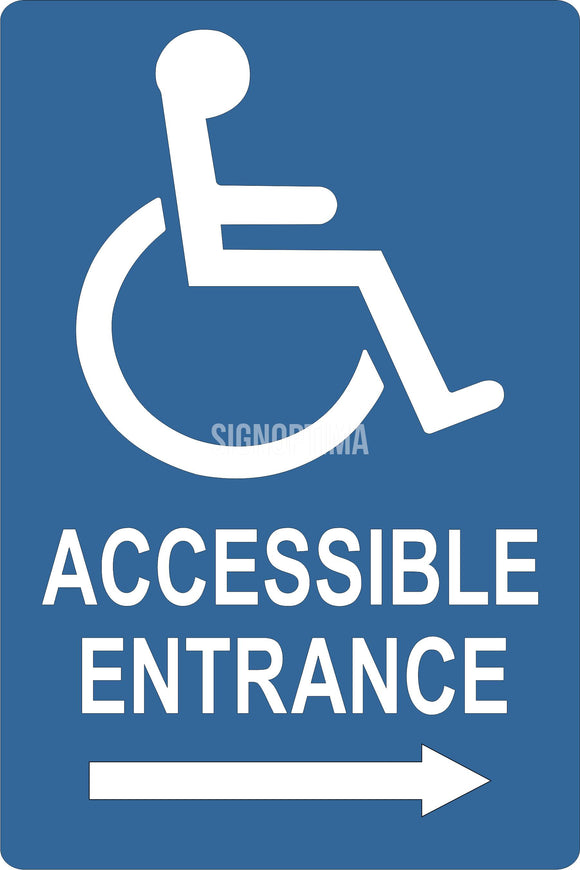ADA Signs: Essential Tools for Inclusive Environments
ADA Signs: Essential Tools for Inclusive Environments
Blog Article
Discovering the Trick Attributes of ADA Indicators for Enhanced Availability
In the world of availability, ADA indications serve as quiet yet effective allies, making certain that rooms are inclusive and accessible for individuals with specials needs. By incorporating Braille and tactile components, these signs damage barriers for the aesthetically damaged, while high-contrast shade systems and clear typefaces cater to diverse visual demands.
Value of ADA Conformity
Ensuring compliance with the Americans with Disabilities Act (ADA) is crucial for cultivating inclusivity and equivalent access in public areas and offices. The ADA, passed in 1990, mandates that all public facilities, companies, and transportation solutions accommodate people with impairments, ensuring they enjoy the very same rights and chances as others. Conformity with ADA criteria not just satisfies lawful commitments yet also enhances a company's online reputation by demonstrating its commitment to diversity and inclusivity.
One of the vital facets of ADA conformity is the implementation of accessible signage. ADA signs are developed to make sure that individuals with specials needs can quickly browse through spaces and structures. These signs should comply with particular guidelines regarding dimension, font style, color comparison, and placement to guarantee visibility and readability for all. Effectively applied ADA signage assists eliminate barriers that people with specials needs typically encounter, thus promoting their self-reliance and self-confidence (ADA Signs).
Furthermore, adhering to ADA guidelines can reduce the risk of possible fines and lawful effects. Organizations that stop working to abide by ADA standards may encounter legal actions or charges, which can be both financially challenging and damaging to their public photo. Hence, ADA compliance is indispensable to promoting a fair environment for everybody.
Braille and Tactile Elements
The unification of Braille and tactile aspects right into ADA signs personifies the principles of availability and inclusivity. It is typically placed below the matching text on signage to make sure that people can access the details without aesthetic help.
Tactile aspects extend beyond Braille and consist of elevated personalities and signs. These parts are made to be noticeable by touch, enabling individuals to identify space numbers, washrooms, departures, and various other critical areas. The ADA sets particular guidelines regarding the dimension, spacing, and placement of these tactile elements to maximize readability and make sure consistency across different settings.

High-Contrast Color Design
High-contrast color pattern play a critical duty in improving the visibility and readability of ADA signage for individuals with aesthetic impairments. These systems are vital as they make the most of the difference in light reflectance between message and background, making sure that indicators are easily discernible, also from a distance. The Americans with Disabilities Act (ADA) mandates the usage of specific color contrasts to fit those with limited vision, making it a critical element of conformity.
The efficiency of high-contrast colors hinges on their ability to attract attention in various illumination problems, consisting of dimly lit settings and areas with glare. Commonly, dark message on a light background or light text on a dark history is used article to achieve optimum contrast. For example, black message on a white or yellow background supplies a stark visual difference that assists in quick acknowledgment and understanding.

Legible Fonts and Text Size
When taking into consideration the layout of ADA signs, the choice of legible font styles and ideal text dimension can not be overemphasized. These aspects are vital for guaranteeing that indications are accessible to individuals with visual problems. The Americans with Disabilities Act (ADA) mandates that typefaces must be sans-serif and not italic, oblique, script, very attractive, or of unusual form. These requirements aid ensure that the message is quickly legible from a range which the characters are appreciable to diverse audiences.
According to ADA standards, the minimal text elevation must be 5/8 inch, and it should raise proportionally with viewing range. Uniformity in message size adds to a cohesive visual experience, aiding individuals in browsing atmospheres successfully.
In addition, spacing between lines and letters is essential to readability. Sufficient spacing protects against characters from appearing crowded, enhancing readability. By adhering to these criteria, designers can dramatically enhance access, guaranteeing that signs serves its designated objective for all individuals, no matter their aesthetic capabilities.
Efficient Positioning Strategies
Strategic positioning of ADA signage is vital for maximizing ease of access and ensuring conformity with lawful criteria. ADA standards state that indications must be installed at a height in between 48 to 60 inches from the ground to guarantee they are within the line of view for both standing and seated individuals.
Additionally, signs have to be put nearby to the latch side of doors to allow very easy identification before access. This placement helps people find rooms and rooms without obstruction. In instances where there is no door, signs ought to be located on the local adjacent wall. Consistency in sign positioning throughout a facility boosts predictability, lowering confusion and enhancing general user experience.

Final Thought
ADA signs play an important function in promoting ease of access by integrating attributes that deal with the needs of individuals with disabilities. These elements collectively promote an inclusive atmosphere, underscoring the importance of ADA conformity in making certain equivalent access for all.
In the world of access, ADA indicators serve as silent yet effective allies, making certain that rooms are accessible and inclusive for people with impairments. The ADA, established in 1990, mandates that all public facilities, companies, and transport services accommodate people with impairments, ensuring they delight in the same civil liberties and chances as others. ADA Signs. ADA signs are designed to ensure that individuals with specials needs can quickly browse with structures and rooms. ADA standards state that signs need to be installed at an elevation in between 48 to 60 inches from the ground to ensure they are within the line of view for both standing and seated people.ADA indications play a vital duty in promoting accessibility by incorporating features that attend to the needs of people with disabilities
Report this page